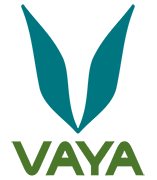How to Cook Millets? Different kinds and their Information

With people becoming a lot more health-conscious and health aware, millets are becoming a part of everyone’s lifestyle. Millets have come to replace rice because of their nutritional value, their contribution to weight loss, and their other health benefits. While you are familiar with the benefits of millets, it is important to know the types and their nutritional value. This also includes the cooking methods.
Kambu (Pearl Millet):
Kambu in Tamil and Bajra in Hindi, Pearl millet is called miracle millet as it has eight times more iron than rice. This millet helps in reducing bad cholesterol, improves bowel movements, heals stomach ulcers, and is a great coolant.
Nutritional value:
Serving size of pearl millet contains:
- Calories- 378kcal for 100gm
- Minerals- 2.3gm
- Iron- 16.9mg
- Calcium- 38mg
- Protein- 10.6gm
- Fiber- 1.3gm
Keppai (Finger Millet):
Widely consumed millet, this millet is called Ragi in Hindi. It has the highest amount of calcium and mineral content compared to any other grain. It helps in healing ulcers, anemia, and is great at controlling diabetes.
Nutritional Value:
Serving size of finger millet contains:
- Calories- 316kcal/100gm
- Iron- 3.9mg
- Calcium- 344mg
- Fat- 8.4gm
- Protein- 7.6gm
- Fiber- 3.6gm
- Minerals- 2.7gm
Thinai (Foxtail Millet):
Known as Rala in Hindi, this was the first kind of millet to have been used in ancient history. Rich in copper, iron and dietary fiber, this millet controls blood sugar and cholesterol levels and keeps the body strong by maintaining a good immune system.
Nutritional Value:
Serving size of foxtail millet contains:
- Calories- 364 kcal/100gm
- Minerals- 3.3gm
- Iron- 2.8gm
- Calcium- 31mg
- Fat- 4.3gm
- Protein- 12.3gm
- Fiber- 8gm
Varagu (Kodo Millet):
They are known as kodra in Hindi and arikelu in Telugu. Kodo millets are rich in phytochemicals, which reduce the risk of cancer, fights knee and joint pains. They are good for diabetics and cures nervous disorders.
Nutritional Value:
Serving size of Kodo Millets is:
- Calories-309kcal/100gm
- Fat- 2.2gm
- Iron- 0.8gm
- Calcium- 14mg
- Minerals- 1.9gm
- Protein- 12.5gm
- Fiber- 2.2gm
Kuthiraivali (Barnyard Millet):
This millet has fiber content six times more than wheat. High in calcium, fiber, and phosphorus, this millet is gluten free. It is an excellent source of antioxidant as well.
Nutritional Value:
Serving size of barnyard millet contains:
- Calories- 342kcal/100gm
- Iron- 15.2mg
- Fat- 4gm
- Calcium- 11mg
- Protein- 11.2g
- Fiber- 10.1g
- Minerals- 4.4g
How to Cook Millets? ( Varagu or Saamai or Kuthiravali):
Clean millets and remove grits in case of any. Add the millets to a pan and add water. When the water starts boiling, reduce the heat, and cover the pan. Cook for 10 minutes and leave it in the pan with lid, for 20-30 minutes.
Serve hot with sambhar, curd or rasam.

